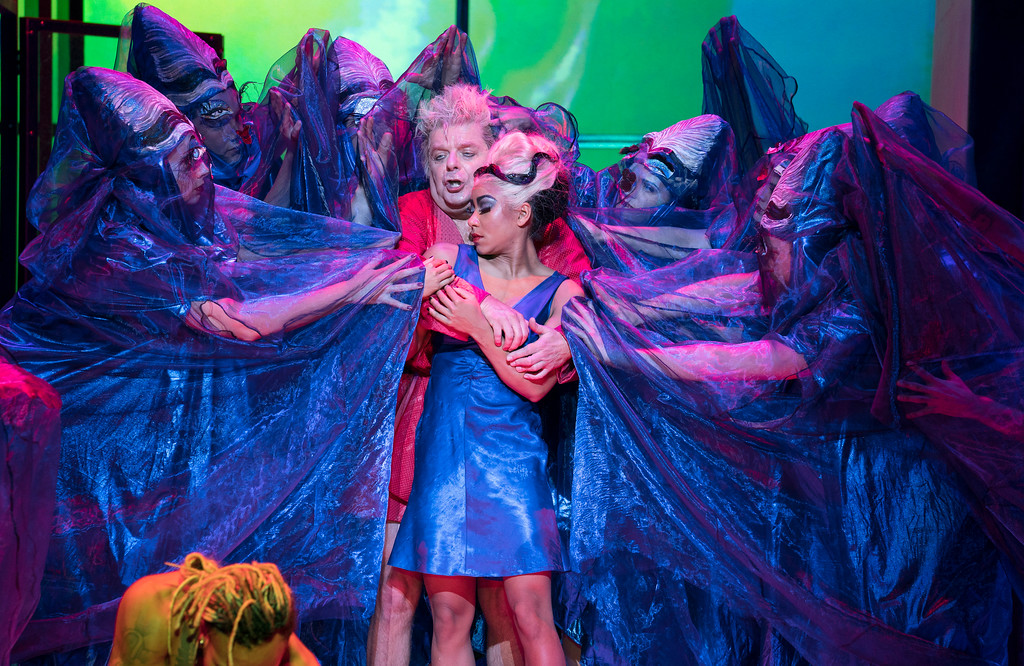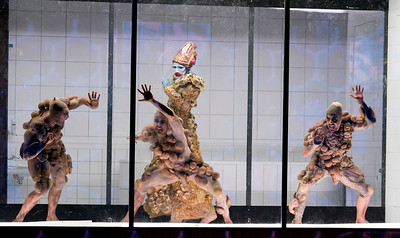London Coliseum, 13 November 2019
Harrison Birtwistle has never been an easy composer but equally has always been worth making the effort to engage with the complexities he creates. There can few works more complex than The Mask of Orpheus which not only has multiple versions of the same character but refuses to provide simple dialogue, so that one is frequently involved in simply going along with the production rather than trying to work out at any one moment what is actually happening. In this light Daniel Kramer’s production was either magnificent or counter-productive, and for my part I tend to think this is the finest work he has done for the company. Rather than trying to smooth out the complexities he allows them to pile up on themselves to the point of confusion, both for those of us watching and for the characters we are watching.
With three Orpheus, three Eurydice and three Aristaeus, who inter-act with each other as well as their own obvious partners, there is a continuing dichotomy for the audience, working out who to pay attention to or who to regard as the more important at any one time. As such it is uncomfortably lifelike. The frustrations of day-to-day living are here given a mystical level but one we can empathise with even given the excessively heightened presentation.
On one level the narrative is naturalistically set, within a large 1970s/80s apartment, but as soon as the glass tank drifts in with the mime artists, and the grandiose costuming of the mythical characters we are aware this is anything but natural.
Nothing is explained and by the end we are none the wiser, unless it is having experienced the story cathartically, which is surely more than enough.
Musically this is finest thing we have heard so far this season with the orchestra on exceptional form for all the demands of the score, under its two conductors – Martyn Brabbins and James Henshaw effectively working back to back. The integration of electronic music with the live musicians is finely balanced and the links are invisible. The large cast are drawn from strength with Peter Hoare a moving Orpheus the Man. The choreography by Barnaby Booth is always closely related to the dramatic needs of the scene rather than being dance for its own sake. The video design is apt and never intrusive.
Though realistically the production is unlikely to be revived it is a pity because it was certainly well attended and ENO should be mounting more works like this rather than yet another – dare I say – Carmen.


